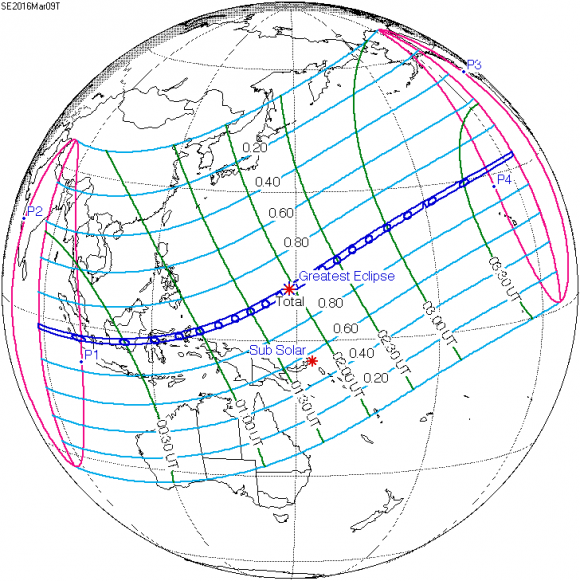March is the third month of the Gregorian calendar. It is named after the Roman god Mars.
Did you know, in the old Roman calendar, it was actually the first month? The original Roman calendar contained ten months, from March through December. It wasn't until Julius Caesar introduced his namesake calendar in 46 BC.
Some interesting notes to know about March: it is the birth month of Albert Einstein (born March 14, 1879), it has the fun mathematical day called Pi (π) Day which is also 3-14, and it has the vernal equinox, which we will talk about later.
Our universe is filled with strange and wacky things. This blog hopes to point out all the unique things that make the cosmos interesting and fun to learn about.
17 March 2016
08 March 2016
Total Solar Eclipse for March 8-9, 2016
There will be a total solar eclipse today, but only if you are in the areas below. Australians and Southeast Asians will have the best view. Some in Hawai'i will see a partial solar eclipse.
See this link for more information.
02 March 2016
Leap Day
Under Julius Caesar, the idea of a leap day/leap year was added to help keep the seasons in alignment with the calendar. Leap days were added every four years to account for the orbit of the Earth around the Sun, which was approximately 365.25 days (it is actually 365.2425 days).
This calendar worked fine until 1582, when Pope Gregory XIII wanted to make sure that the Christian holy days fell around the same time every year. By 1582, the Julian calendar was out of sync with the seasons by 10 days. The calendar developed under Gregory was able to account for the difference between 365.25 days and 365.2425 days. We still have a leap day every four years, but to help account for above difference, this calendar did not have a leap year if the years was divisible by 100 but not by 400. For example, 2000 was a leap year since it is divisible by 400. But 1900 was not and 2100 will not be leap years. This will help keep the calendar in sync with the seasons until 9282, meaning an error of only 1 day every 7700 years. The Julian calendar had an error of 1 days every 128 years.
Subscribe to:
Posts (Atom)
